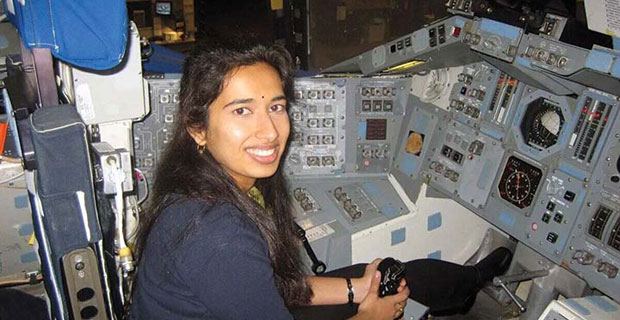Indian-American spearheads Nasa Mission
As the world watched the new NASA rover touchdown ...
As the world watched the new NASA rover touchdown on the Martian surface, it was Indian American Swati Mohan who virtually spearheaded the successful landing of Perseverance that will search for signs on life on the Red Planet. “Touchdown confirmed! Perseverance is safely on the surface of Mars, ready to begin seeking the signs of past life,” cheered Mohan, wearing a mask from the NASA headquarters in the US. The landing was perceived to be “so dangerous” it was nicknamed “7 minutes of terror”.
Swati Mohan, who also participated in several key NASA missions like the Cassini (a mission to Saturn) and GRAIL (a pair of spacecrafts in formation on the Moon), had immigrated to the US from India when she was just age one and was inspired by the Star Trek series at age 9.
Mohan holds a Bachelor of Science degree in Mechanical and Aerospace Engineering from Cornell University and completed her MS and PhD from MIT in aeronautics/astronautics. “@NASAPersevere is still in space right now, about 9,000 miles from Mars. So far, she is healthy and on course,” NASA said in a tweet. “Swati Mohan, @NASAJPL engineer on the rover’s landing team, provides a status update on the #CountdownToMars”, it added.
Mohan wanted to become a pediatrician until age 16 but she was inspired by her first physics class and saw “engineering” as a way to further her interest in space exploration. She has been a member of the Perseverance Rover mission since its inception at NASA’s Jet Propulsion Laboratory in Pasadena, California. The largest, most advanced rover NASA has sent to another world, touched down on Mars in February after a 203-day journey traversing 472 million km. Packed with groundbreaking technology, the Mars 2020 mission was launched on July 30, 2020, from Cape Canaveral Space Force Station in Florida. The Perseverance rover mission marks an ambitious first step in the effort to collect Mars samples and return them to Earth. “This landing is one of those pivotal moments for NASA, the United States, and space exploration globally - when we know we are on the cusp of discovery and sharpening our pencils, so to speak, to rewrite the textbooks,” said acting NASA Administrator Steve Jurczyk.










Comments.